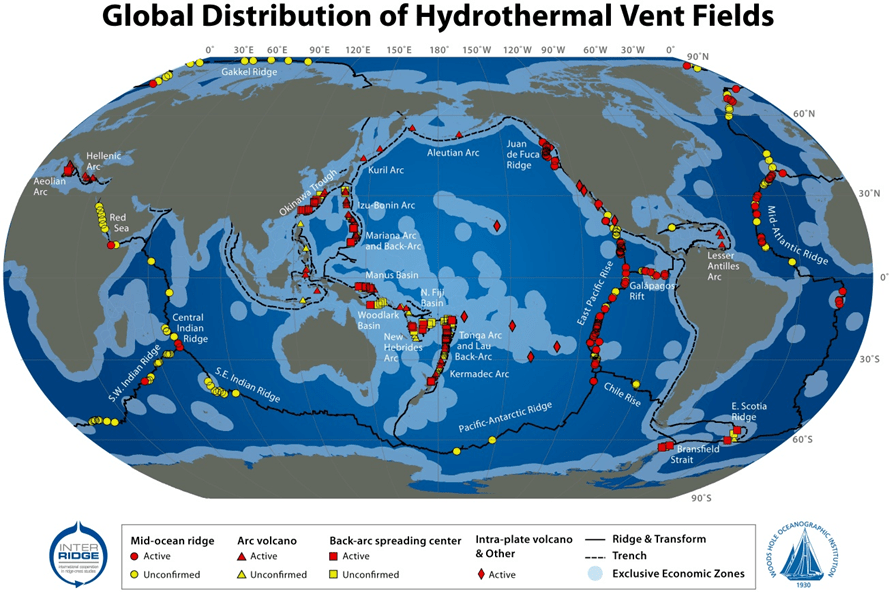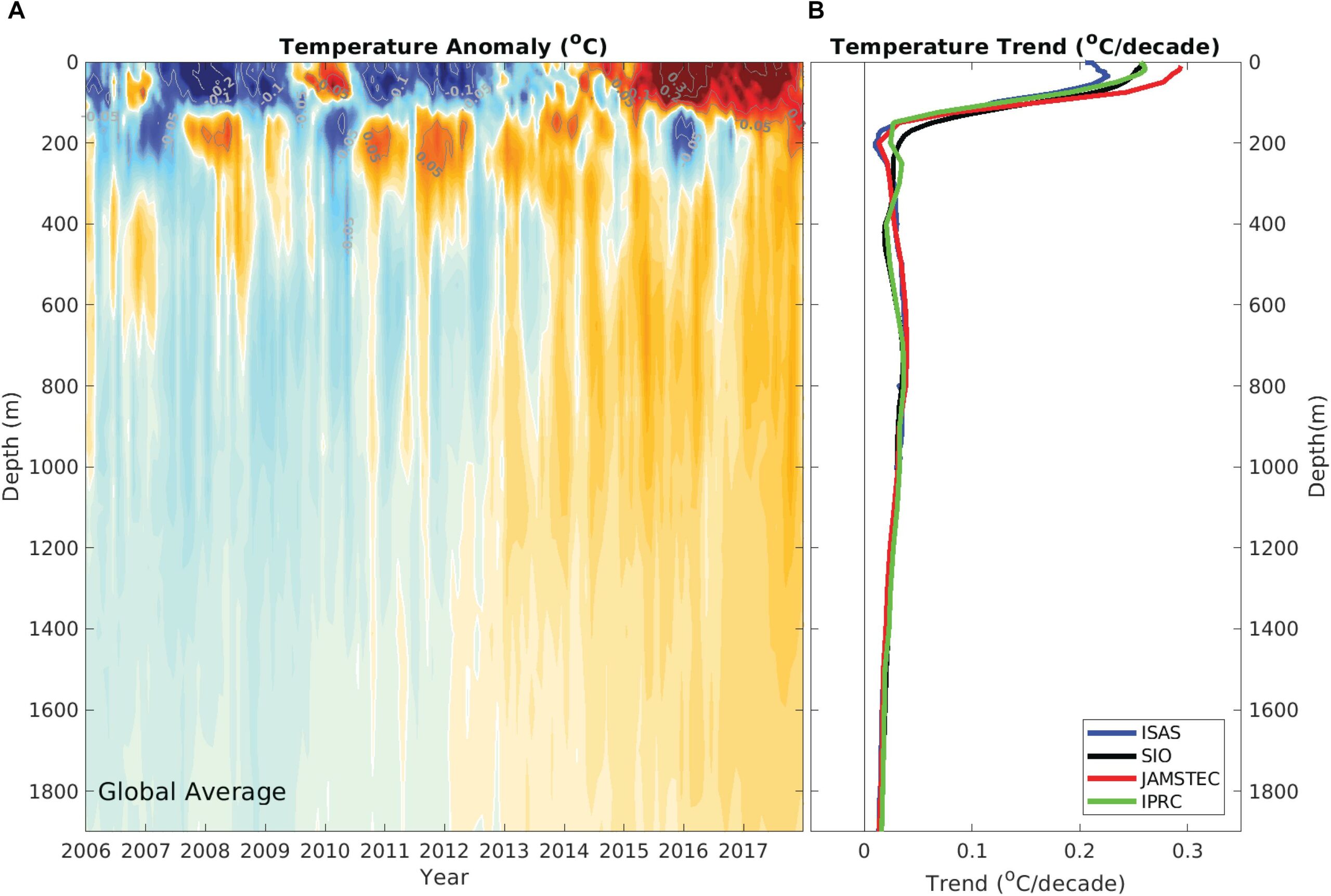How Much Ocean Heating is Due To Deep-Sea Hydrothermal Vents?
January 29th, 2024 by Roy W. Spencer, Ph. D.
I sometimes see comments to the effect that recent ocean warming could be due to deep-sea hydrothermal vents. Of course, what they mean is an INCREASE in hydrothermal vent activity since these sources of heat are presumably operating continuously and are part of the average energy budget of the ocean, even without any long-term warming.
Fortunately, there are measurements of the heat output from these vents, and there are rough estimates of how many vents there are. Importantly, the vents (sometimes called “smokers”) are almost exclusively found along the mid-oceanic ridges, and those ridges have an estimated total length of 75,000 km (ref).

So, if we had (rough) estimates of the average heat output of a vent, and (roughly) know how many vents are scattered along the ridges, we can (roughly) estimate to total heat flux into the ocean per sq. meter of ocean surface.
Direct Temperature Measurements Near the Vents Offer a Clue
A more useful observation comes from deep-sea surveys using a towed sensor package which measures trace minerals produced by the vents, as well as temperature. A study published in 2016 described a total towed sensor distance of ~1,500 km just above where these smokers have been located. The purpose was to find out just how many sites there are scattered along the ridges.
Importantly, the study notes, “temperature anomalies from such sites are commonly too weak to be reliably detected during a tow“.
Let’s think about that: even when the sensor package is towed through water in which the mineral tracers from smokers exist, the temperature anomaly is “too weak to be reliably detected”.
Now think about that (already) extremely weak warmth being mixed laterally away from the (relatively isolated) ocean ridges, and vertically through 1,000s of meters of ocean depth.
Also, recall the deep ocean is, everywhere, exceedingly cold. It has been calculated that the global-average ocean temperature below 200m depth is 4 deg. C (39 deg. F). The cold water originates at the surface at high latitudes where it becomes extra-salty (and thus dense) and it slowly sinks, filling the global deep oceans over thousands of years with chilled water.
The fact that deep-sea towed probes over hydrothermal vent sites can’t even measure a temperature increase in the mineral-enriched water means there is no way for buoyant water parcels to reach up several kilometers to reach the thermocline.
Estimating The Heat Flux Into the Ocean from Hydrothermal Vents
We can get some idea of just how small the heat input is based upon various current estimates of a few parameters. The previously mentioned study comes up with a possible spacing of hydrothermal sites every ~10 km. So, that’s 7,500 sites around the world along the mid-oceanic ridges. From deep-sea probes carrying specialized sampling equipment, the average energy output looks to be about 1 MW per vent (see Table 1, here). But how many vents are there per site? I could not find a number. They sampled several vents at several sites. Let’s assume 100, and see where the numbers lead. The total heat flux into the ocean from hydrothermal vents in Watts per sq. meter (W m-2) would then be:
Heat Flux = (7,500 sites)x(100 vents per site)x(1 MW per vent)/(360,000,000,000,000 sq. m ocean sfc).
This comes out to 0.00029 W m-2.
That is an exceedingly small number, about 1/4,000th of the 1 W m-2 estimated energy imbalance from Argo float measurements of (very weak) ocean warming over the last 20 years or so. Even if the estimate is off by a factor of 100, the resulting heat flux is still 1/40th of global ocean heating rate. I assume that oceanographers have published some similar estimates, but I could not find them.
Now, what *is* somewhat larger is the average geothermal heat flux from the deep, hot Earth, which occurs everywhere. That has a global average value of 0.087 W m-2. This is approximately 1/10 of the estimate current ocean heating rate. But remember, it’s not the average geothermal heat flux that is of interest because that is always going on. Instead, that heat flux would have to increase by a factor of ten for decades to cause the observed heating rate of the global deep oceans.
Evidence Ocean Warming Has Been Top-Down, Not Bottom-Up
Finally, we can look at the Argo-estimate vertical profile of warming trends in the ocean. Even though the probes only reach a little more than half-way to the (average) ocean bottom, the warming profile supports heating from above, not from below (see panel B, right). Given these various pieces of evidence, it would difficult to believe that deep-sea hydrothermal vents — actually, an increase in their heat output — can be the reason for recent ocean warming.

